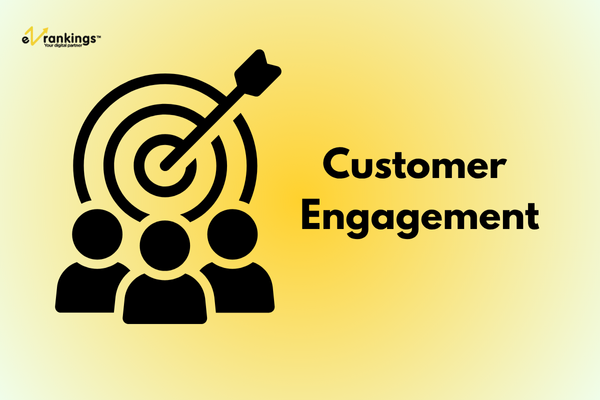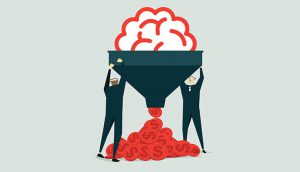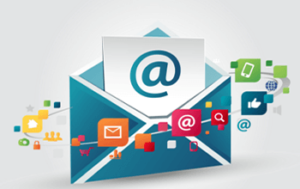Customer Engagement: Ever Changing World

The briskly evolving world is all about digitization. Whether it’s online shopping or watching movies on the OTT platforms, almost every aspect of our lives revolves around this digital world. That’s why businesses need to step up the game to stay ahead of the fierce competition markets around are experiencing. Here, the key to success is to improving the overall customer engagement. Generating interactive content, launching an intuitive website, or making the services/products mobile-ready have always been on the priority lists.
But these can only be done with proper technology interaction. Take a chatbot for example! Its tailored responses based on human-based queries and the historical datasets can keep the customers engaged. Similarly, people nowadays prefer to have a mobile app more than a mere website as it provides easy access to the products and services in finger click. That being said, we have here illustrated what customer engagement means in this ever-changing world and how businesses can improve the overall performance through this.
The Evolution of Customer Engagement
Since decades, customer engagement has expedited a lot, transforming from mere retail stores to social media platforms. Understanding this journey will help businesses grasp the exact picture without any shroud of doubts.
- In the past, engagement was merely transactional and one-way. People could connect with brands through touchpoints like cold calls, print advertisements, and retail stores. This introduced huge delays in the feedback loops. To top it off, personalization was limited greatly, almost negligible.
- Then came the concepts of digital-first strategies and real-time customer interaction with the brands. These have fueled the modern-day businesses, allowing them to capitalize on channels like social media platforms, live streams, and personalized emails. Businesses focus on immediate and prompt responses to customer grievances and queries to boost the loyalty. In addition, personalization services and products are based on real-time data analytics.
- In the future, technologies like AI will drive hyperpersonalization and predictive customer engagement. Voice commerce will streamline brand interactions and virtual platforms of AR/VR will deliver a far more immersive user experience.
Why Engagement Matters More Than Ever?
In today’s world where users want nothing but the best for the time and efforts they invest in a business, engagement has taken the top seat in the priority queue. Here’s why!
- It helps businesses increase brand loyalty and extend the overall lifetime value of every customer.
- Customers can feel emotionally connected with the brand, which will automatically influence the buying decisions.
- Engaged customers means a spike in the likelihood of receiving repeat orders. To top it off, it also increases the brand’s outreach organically through word-of-mouth referrals.
- Brands can leverage datasets, like customer purchases, past actions, and others to adapt faster and implement personalized strategies.
All in all, customer engagement is the key differentiator for every brand in this hypercompetitive market. Leveraging it will allow businesses to drive higher ROIs and reduce the churn through active interactions.
Key Drivers of Change In Customer Engagement
Shifting Customer Expectations
Users do not want brands that communicate with only messages. Rather, what they want is personalized, instant, and meaningful interactions.
Rise of Digital and Mobile-First Behavior
Smartphones have become the primary touchpoint in today’s time. This shift has forced brands to invest in mobile-first strategies to deliver fast user experiences.
Influence of AI, Automation, and Data Analytics
With these modern-day technologies, brands can get valuable insights into customer preferences and accordingly modify their strategies, be it for marketing or for sales.
Omnichannel Experience Becoming the Norm
Every consumer expects to have seamless transitions from one platform to another, including mobile apps, websites, social media profiles, and online marketplaces.
Privacy Regulations Affecting Communication
Laws like CCPA and GDPR require brands to enable transparent communication with their consumers. To top it off, these also highlight consent-based marketing and secure engagement strategies.
Strategies For Modern Customer Engagement
Personalization at scale
User engagement in the modern day is driven by tailored experiences based on personal preferences and interests. This is where state-of-the-art technologies, like AI and data analytics come into the play. These allow businesses to gain valuable insights into user behaviors, using which they can craft personalized content. With this approach, they can enhance the satisfaction rate, build stronger connections, and drive higher loyalty.
Omnichannel Integration
An effective engagement strategy should incorporate delivering a unified experience across all touchpoints through which the brand interacts with users. Omnichannel integration paves the way for seamless transitions between platforms, consistent messaging, and real-time updates without discrepancies.
Real-time Interaction
Instant communication channels foster trust and higher customer engagement. AI chatbots, live chats, and instant mobile notifications help businesses attend to their users faster. These can also help with accurate product recommendations based on search histories and capture the interest when it matters the most.
User-generated Content and Community Building
Businesses can capitalize on components like social media posts, reviews, and testimonials to encourage the customers to share their experiences. This will help build communities around the brand and foster a sense of loyalty and belonging. To top it off, it will transform the customers into reliable advocates and enable businesses to expand their market outreach organically.
Proactive Customer Support
Lastly, proactive support will ensure that brands always anticipate needs and are capable of offering instant and accurate resolutions. From reminders to follow-ups and usage tips, one can leverage data analytics to implement predictive assistance.
Technologies Empowering Engagement Today
CRM and CDP
Both these tools gather and consolidate customer data from multiple platforms in a centralized dashboard. Hence, brands can easily leverage the information to understand user behaviors, segment audience based on specific parameters, and deliver hyper-personalized experiences.
Marketing Automation Tools
Businesses can use automation routines for email campaigns, social media DMs, and SMS. This will help them to foster responsive, prompt message-based communication with the customers. Efficiency will be improved by significant levels, along with better lead generation and increased customer retention rate.
AI and Predictive Analytics
AI-based models and predictive analytics will help professionals find trends and patterns in customer behaviors, market shifts, and even the competition graphs. Based on the collected datasets, businesses will be able to deliver personalized recommendations, customize user journeys, and modify existing brand improvement strategies on the go.
Conversational cCommerce
In this practice, businesses can leverage voice assistants, messaging apps, and AI-based chatbots to foster real-time interaction between the brands and the customers. This can simplify the buying journey and enhance convenient communication.
Challenges in the Changing Engagement Landscape
As customer engagement metrics are changing drastically, keeping up with the pace can prove to be extremely challenging for most businesses. Here’s why!
- Technology adoption will be a hindrance due to lack of user knowledge, legacy infrastructures, and absence of a modular architecture.
- While access to customer data can foster personalization, it might raise concerns for privacy. This is where consent-based marketing will come into the play.
- Another hiccup that businesses can expect is accurately measuring customer engagement across multiple touchpoints.
The role of Customer Feedback in Continuous Engagement
Listening actively to the customers is the key to improving the engagement rate by catering to their specific needs. This will help businesses build trust with the users and portray that their opinions are valued the most. In addition, continuous feedback will also help improve the engagement strategies without hiccups.
Social media polls, surveys, live chats, and other tools can be used to gather valuable information about what users loved or what are their complains. Every feedback loop should be closed properly by taking action points and realizing them properly.
Conclusion
Improving customer engagement is an ongoing process, which is why businesses need to be more adaptive. If not, it come become a real challenge to integrate new technologies or implement action strategies on time. Collecting feedbacks from the customers can help businesses realize what are the areas that need improvement along with the discrepancies. It will pave the way for continuous improvement and modification without having to worry about revenues or any other aspect. Looking to enhance your customer engagement strategy? Partner with EZ Rankings, best performance marketing agency and let our experts help you drive meaningful interactions that fuel business success.






